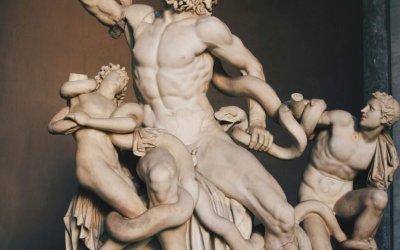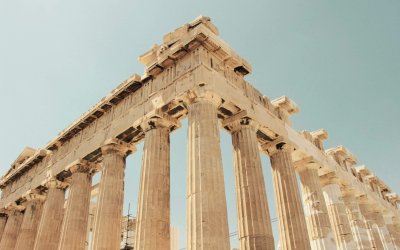Plato came from a wealthy, connected Athenian family and lived a comfortable upper-class lifestyle until he met an odd little man named Socrates, who showed him a new world of ideas and ideals. Socrates taught Plato that a man must use reason to attain wisdom, and that the life of a lover of wisdom, a philosopher, was the pinnacle of achievement. Plato dedicated himself to living that ideal and went on to create a school, his famed Academy, to teach others the path to enlightenment through contemplation.
However, the same Academy that spread Plato’s teachings also fostered his greatest rival. Born to a family of Greek physicians, Aristotle had learned early on the value of observation and hands-on experience. Rather than rely on pure contemplation, he insisted that the truest path to knowledge is through empirical discovery and exploration of the world around us. Aristotle, Plato’s most brilliant pupil, thus settled on a philosophy very different from his instructor’s and launched a rivalry with profound effects on Western culture.
The two men disagreed on the fundamental purpose of the philosophy. For Plato, the image of the cave summed up man’s destined path, emerging from the darkness of material existence to the light of a higher and more spiritual truth. Aristotle thought otherwise. Instead of rising above mundane reality, he insisted, the philosopher’s job is to explain how the real world works, and how we can find our place in it. Aristotle set up a school in Athens to rival Plato’s Academy: the Lyceum. The competition that ensued between the two schools, and between Plato and Aristotle, set the world on an intellectual adventure that lasted through the Middle Ages and Renaissance and that still continues today.
From Martin Luther (who named Aristotle the third great enemy of true religion, after the devil and the Pope) to Karl Marx (whose utopian views rival Plato’s), heroes and villains of history have been inspired and incensed by these two master philosophers—but never outside their influence.
Accessible, riveting, and eloquently written, The Cave and the Light provides a stunning new perspective on the Western world, certain to open eyes and stir debate.
“Entertaining and often illuminating.”
The Wall Street Journal
“A fabulous way to understand over two millennia of history, all in one book.”

Library Journal
“Examining mathematics, politics, theology, and architecture, the book demonstrates the continuing relevance of the ancient world.”

Publishers Weekly
“A sweeping intellectual history viewed through two ancient Greek lenses . . . breezy and enthusiastic but resting on a sturdy rock of research.”

Kirkus Reviews
American historian and author Arthur Herman joins Michael this week for a discussion on his new book The Viking Heart, the backstory, roots, and inspiration behind writing it, how the Vikings created what became medieval Russia, the official origin of the Molotov cocktail, German misconceptions of Scandinavian culture in the

On this episode of “YOUR WELCOME” Michael Malice is joined by author and historian Arthur Herman. Arthur has written a... Read More

Over the past year, with Brexit and Donald Trump’s US presidency providing the coordinates, too many have argued that the... Read More

The ancient Greek philosophers Plato and Aristotle may seem like the quintessential Dead White Males, but in fact they’re very... Read More
bookings@arthur-herman.com
bookings@arthurherman.com
888.555.1234
Arlington, Virginia
Copyright Arthur Herman 2025.